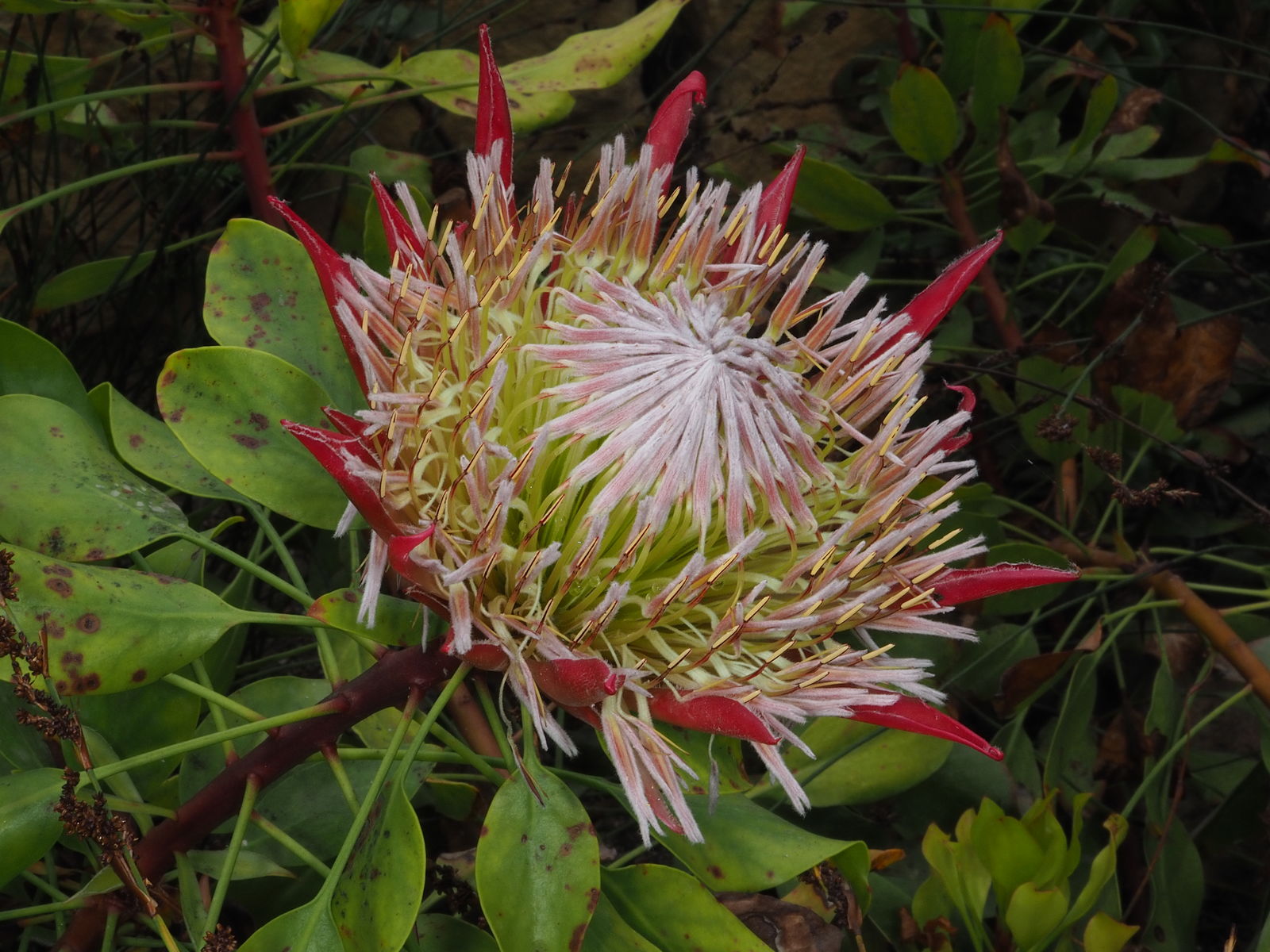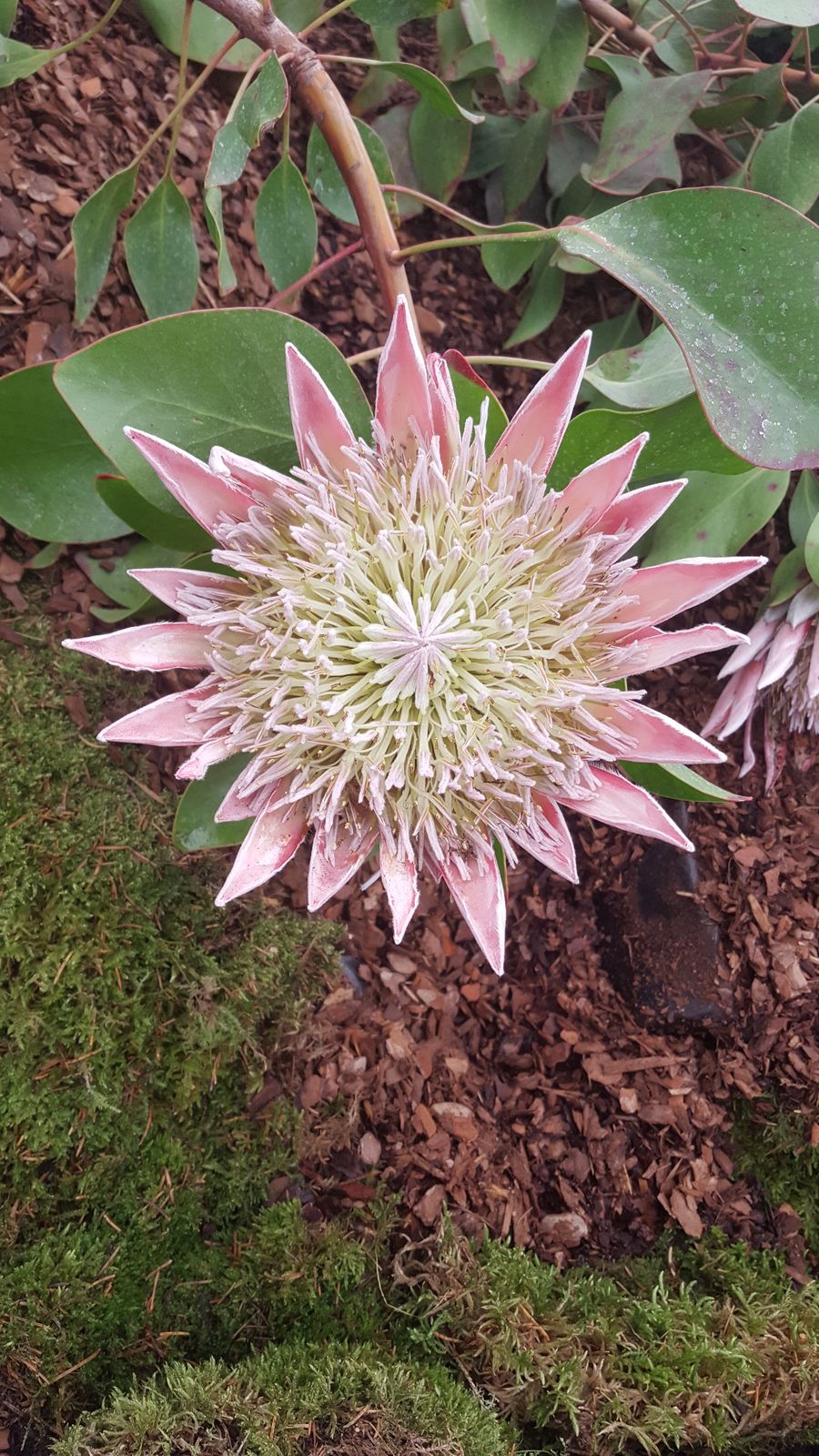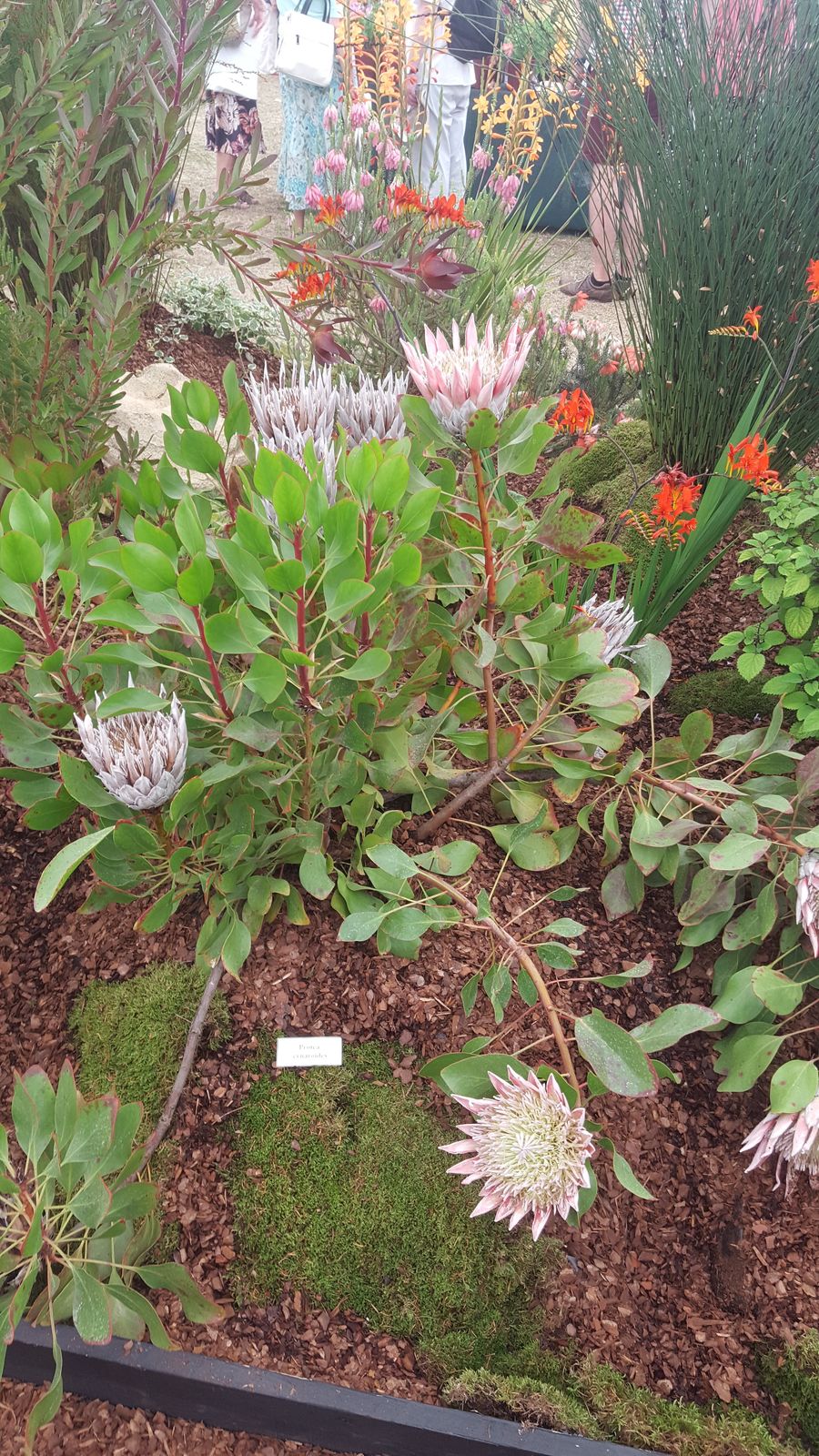Family: Proteaceae
Author: L.
Bibliography: Mant. Pl. 2: 190 (1771)
Year: 1771
Status: accepted
Rank: species
Genus: Protea
Vegetable: False
Observations: S. Cape Prov.
Description
The King Protea, scientifically known as Protea cynaroides, is a remarkable and iconic flowering plant that holds a prominent position in the plant kingdom, particularly within its native range. With a history dating back to its first description in 1771 by the renowned botanist Carl Linnaeus, this species belongs to the diverse and intriguing Proteaceae family.
Native to the southern regions of Cape Province, South Africa, the King Protea thrives in a terrain marked by unique climatic and soil conditions. The region’s biodiversity and specific environmental factors have shaped the evolution of this majestic plant, contributing to its distinctive features and resilience.
The King Protea is easily recognizable by its large, striking flower heads that resemble an artichoke, a characteristic alluded to in its scientific name, cynaroides, which means “like a cynara” (a genus that includes the globe artichoke). These impressive blooms can measure up to 30 centimeters in diameter, making them one of the largest in the protea family. The flower heads are composed of numerous small tubular florets surrounded by stiff, colorful bracts, which can range in hue from creamy white and soft pink to a deep, vibrant red.
The plant itself is a robust shrub, typically reaching heights of about 1 to 2 meters. Its leaves are thick, leathery, and elliptically shaped, designed to conserve water and withstand the harsh sun and poor soils typical of its native habitat. The foliage is often a deep green, providing a striking contrast to the vivid colors of its blooms.
King Proteas play a significant role in their ecosystem, particularly in terms of pollination. They attract a variety of pollinators, including birds, bees, and beetles, facilitating genetic diversity and the propagation of the species. Additionally, these plants are known for their ability to survive wildfires, a common occurrence in their natural habitat. They have a deep, robust root system that allows them to resprout after fires, thus playing a critical role in the ecological recovery processes.
Beyond their ecological importance, King Proteas have cultural and symbolic significance. They are celebrated as the national flower of South Africa, symbolizing beauty, strength, and diversity. This emblematic status underscores their importance to the nation’s natural heritage and their prominence in horticulture and floristry around the world.
In summary, the King Protea (Protea cynaroides) is an extraordinary plant with a rich botanical history and an array of striking physical characteristics. Its resilience, aesthetic appeal, and ecological role make it a fascinating subject of study and admiration in the plant world.
Common Names
Eng: king protea, giant protea, mountain rose
Swe: kungsprotea
En: King protea, King sugarbush, Giant Protea, Mountain Rose, King Sugar Bush
Af: Aprilprotea, Koningprotea, Reuseprotea, Waterprotea
Ar: بروطيا خرشوفية
Bg: Артишокова протея
Zh: 蓟花山龙眼, 帝王花
Fi: Kuningasprotea
De: Königsprotea
Fa: گل شکرپاره
Ru: Протея артишоковая
Sv: Kungsprotea
Zh-tw: 普羅蒂亞花
Synonyms
- Protea eriolepis ((Gand.) Gand. & Schinz)
- Protea woodwardii (Endl.)
- Protea petiolata (H.Buek ex Meisn.)
- Erodendrum cynariflorum (Knight)
- Protea cyclophylla ((Gand.) Gand. & Schinz)
- Scolymocephalus cynaroides ((L.) Kuntze)
Distribution
- Cape Provinces (native)
Additional Images
Flower
Taken Jan 2, 2018 by Pep Secem (cc-by-sa)
Taken Feb 28, 2019 by Andreas Jochheim (cc-by-sa)
Taken Jan 2, 2018 by Pep Secem (cc-by-sa)
Taken Jun 19, 2019 by Jia Hui Tiong (cc-by-sa)
Taken Jun 19, 2019 by Jia Hui Tiong (cc-by-sa)
Habit
Taken Mar 22, 2019 by Pierre Bonnet (cc-by-sa)
Taken Mar 22, 2019 by Pierre Bonnet (cc-by-sa)
Taken Mar 22, 2019 by Pierre Bonnet (cc-by-sa)
Taken Jan 26, 2018 by Pep Secem (cc-by-sa)
Taken Jan 26, 2018 by Pep Secem (cc-by-sa)
Leaf
Taken Feb 27, 2011 by Tela Botanica − Yoan MARTIN (cc-by-sa)
Taken Sep 4, 2021 by Azevedo Célia (cc-by-sa)
Taken Nov 7, 2021 by nancy pagan (cc-by-sa)
Taken Oct 8, 2021 by Campainha José Passos (cc-by-sa)
Taken Jun 19, 2019 by Jia Hui Tiong (cc-by-sa)
Other
Taken Apr 19, 2016 by Daniel Barthelemy (cc-by-nc)
Taken Nov 15, 2012 by Photoflora – Benoit BOCK (©)
Taken Apr 19, 2016 by Daniel Barthelemy (cc-by-nc)
Taken Apr 19, 2016 by Daniel Barthelemy (cc-by-nc)
Taken Oct 15, 2022 by Jim Knopf (cc-by-sa)
Fruit
Taken Mar 22, 2019 by Pierre Bonnet (cc-by-sa)
Taken Sep 11, 2022 by Gomez-Martinez Carmelo (cc-by-sa)
Taken Sep 2, 2021 by Giulia Bonazzi (cc-by-sa)
Taken Dec 28, 2021 by Montes Miguel (cc-by-sa)
Taken Jun 29, 2018 by Mihajlo Tomić (cc-by-sa)
Bark
Taken Sep 8, 2021 by Dieter Albrecht (cc-by-sa)
Taken Sep 18, 2021 by Dieter Albrecht (cc-by-sa)
Taken Feb 27, 2011 by Tela Botanica − Yoan MARTIN (cc-by-sa)

© copyright of the Board of Trustees of the Royal Botanic Gardens, Kew.

© copyright of the Board of Trustees of the Royal Botanic Gardens, Kew.

© copyright of the Board of Trustees of the Royal Botanic Gardens, Kew.
Sources
- WFO (No URL)
- IPNI (No URL)
- GBIF (https://www.gbif.org/species/5637947)
- POWO (http://powo.science.kew.org/taxon/urn:lsid:ipni.org:names:705744-1)
- PlantNet (https://identify.plantnet.org/species/the-plant-list/Protea cynaroides (L.) L.)




























